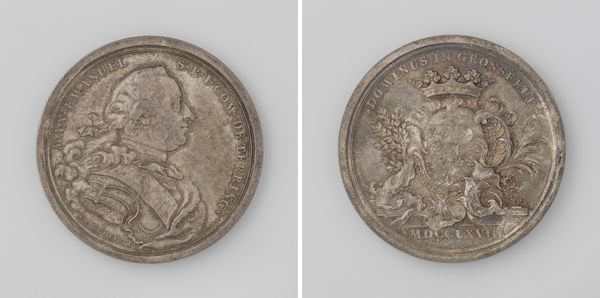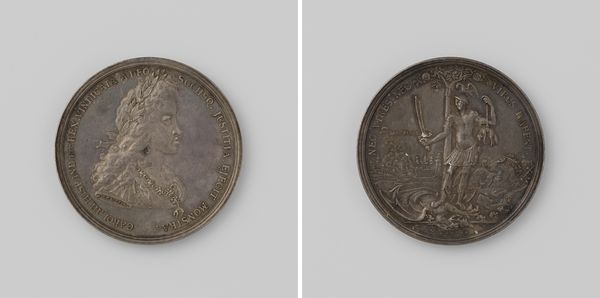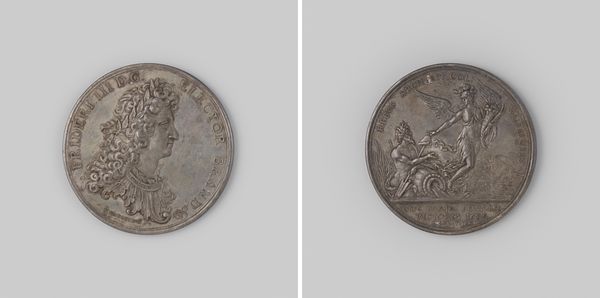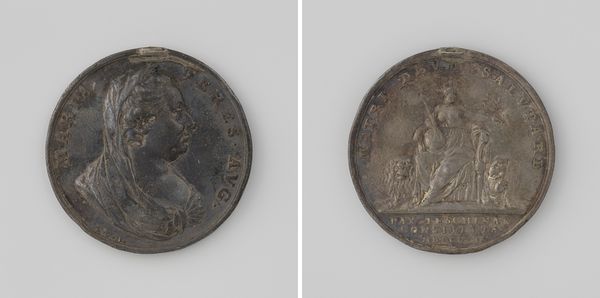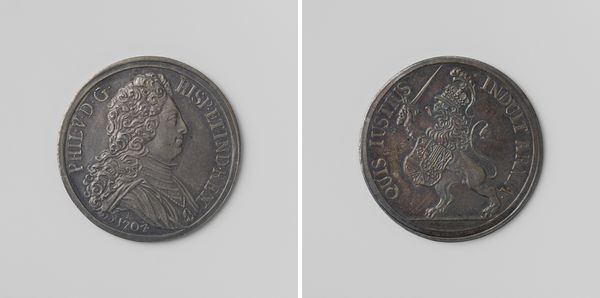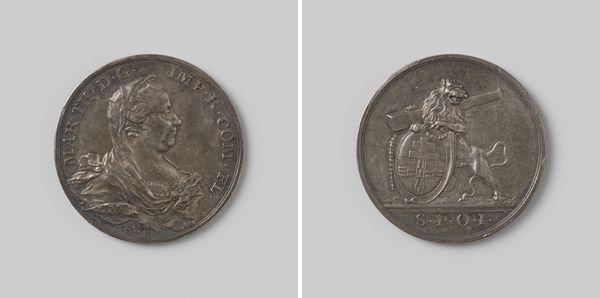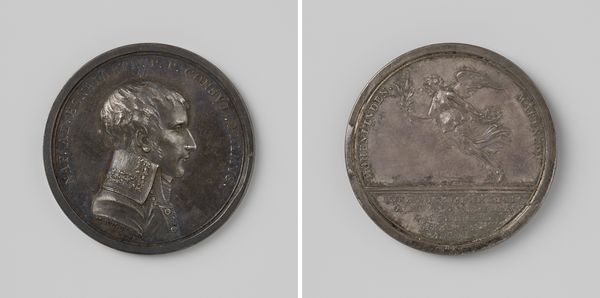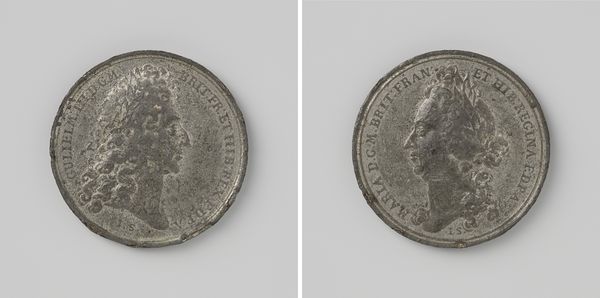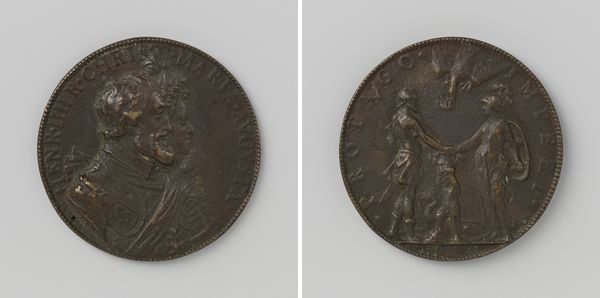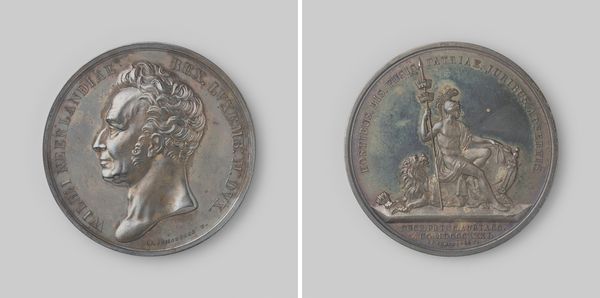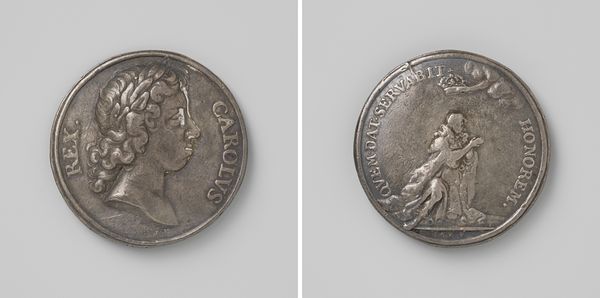
Vrede van Fontainebleau tussen Denemarken en Zweden, ter ere van Karel XI 1679
0:00
0:00
metal, sculpture
#
portrait
#
baroque
#
metal
#
sculpture
#
sculpture
#
history-painting
Dimensions: diameter 3.1 cm, weight 18.28 gr
Copyright: Rijks Museum: Open Domain
Curator: At first glance, there is an undeniable formality to this object. Editor: Indeed. This is a medal, crafted by Arvid Karlsteen in 1679 to commemorate the Peace of Fontainebleau between Denmark and Sweden. One side presents a profile portrait of King Charles XI. Curator: The king's visage immediately projects a sense of inherited authority. What resonates profoundly is the inscription encircling his profile: how does it tie into larger themes of rulership and cultural memory? Editor: On the other side we find a classically draped figure representing peace, which aligns the event with enduring symbols of concord. The image speaks to the hopes and desires for an end to conflict that are often associated with Baroque representations of power. Curator: The use of metal underscores the intent for permanence. As a physical token of the Peace of Fontainebleau, it suggests a cultural longing for a cessation of hostilities. Are these portrayals genuine or merely idealized projections? Editor: What's fascinating is how peace, usually an abstract idea, becomes intertwined with a single man’s image. We must consider the social and political context: Who was this medal created for? Did it genuinely represent public sentiment, or was it merely royal propaganda? Curator: Perhaps both can be true. Images possess the ability to embody multiple layers of meaning and cultural functions simultaneously. Even royal portraiture—the artistic construction of power— can give the viewer an interesting framework for understanding human agency within structural constraint. Editor: Absolutely. This medal prompts us to question not only the surface narratives of peace and power but also the complex dynamics of representation itself. It embodies both artistic skill and strategic communication of politics, embedded within the metal. Curator: So, beyond its face value as a historical document, it serves as a rich field of inquiry. As you said earlier, symbols, consciously employed or not, tell multiple stories about historical moments. Editor: Yes, by investigating this, perhaps it may prompt critical dialogues between its contemporary values. It’s a challenge for modern interpretations to meet the image on its own terms while also confronting its ideological underpinnings.
Comments
No comments
Be the first to comment and join the conversation on the ultimate creative platform.
